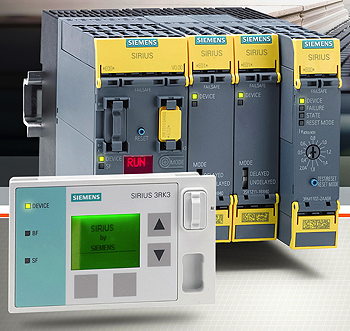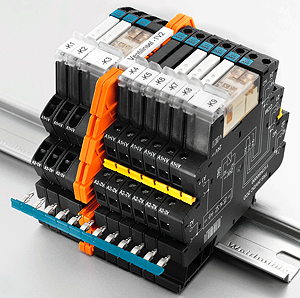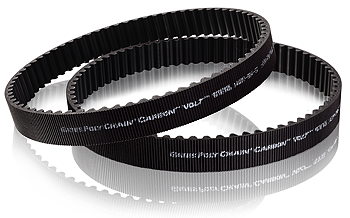Hannover Fair 2015 exclusive show report

Siemens was showing a range of safety relays with up to six safety functions that can be parameterised using drag-and-drop software. The Sirius 3SK2 relays (below) come in two variants: a 22.5mm-wide version with up to four safety functions, which Siemens claims is slimmer than any other software-configurable safety relay; and a 45mm-wide version with up to six safety functions and a diagnostics display. The relays’ output functions can be assigned independently, and they can be combined with standard industrial controls, such as motor starters.

Siemens also has a new modular range of command and signalling devices in four designs. The IP69K–protected Sirius Act devices include metal and plastic pushbuttons, switches and indicators in various colours. A snap-on design allows front elements to be assembled with rear holders quickly without tools. An online configurator simplifies selection and the devices can be connected via AS-i, IO-Link or standard cabling.
Steute has extended its family of self-powered wireless switches with several additions, including a tiny device that it calls “the smallest, self-sufficient wireless switch for industrial applications currently on the market”. The RF 16 device measures 49 x 40 x 21mm and is powered by a generator that converts the kinetic energy produced by actuating the switch into electrical energy which is used to transmit the signal. There is no need for batteries, cables or an external power supply.
Steute is also offering a range said to make it easier to install and operate switchgear in explosive environments. The Atex- and IECEx approved Wireless EX range avoids the need to use Ex-compliant cables.
Weidmüller has expanded its Termseries range of rail-mounting terminal blocks (below) to include three new 12.8mm-wide models capable of switching inductive and capacitive loads up to 16A without needing cross-connections. The new devices include NO, NC and CO versions and can be used to switch loads such as motors, contactors and pumps.

Another company offering DIN-rail terminal blocks at Hannover was Wieland, whose fasis WTP range uses push-in connections that accept conductors and accessories without needing tools. Conductors from 0.08–10mm2 are catered for using just two types of terminal.
MECHANICAL AND LINEAR
Delta has a new Scara robot and controller which, together, can control four robot axes and six external axes. Delta says this can result in productivity improvements of up to three times in some applications. The 400mm-long DRS40L robot arm can carry loads up to 3kg, while the Asda-MS controller has built-in servodrive technology. Machine vision can be integrated to help with identification and inspection.
Gates has developed a static-dissipating version of its Poly Chain Carbon synchronous belt, which can be used safely in potentially explosive atmospheres. The teeth in the new Volt version (below) are covered with a graphite material that conducts static electricity. The belt, which complies with the ISO 9563 static conductivity standard, in available in 8M and 14M pitches and in the same widths and lengths as standard PolyChain Carbon belts. The belts are made of a tough, lightweight polyurethane compound and carbon tensile cords, resulting in almost no stretching throughout their lives. They are said to save space compared to conventional belt drives.

Igus has developed a linear guide made of carbon-reinforced plastic which, it claims, is up to 40% lighter than aluminium rail and up to 60% lighter than steel versions. The DryLin W-profile carbon guides are rigid and non-magnetic. They are available as completely metal-free toothed belt axes in lengths up to 2m. They need no external lubrication.
KTR has come up with a floating caliper brake that can be actuated either hydraulically or electromechanically. The two versions (below) are the same size and can be interchanged without having to redesign an application. The passive version of the XS brake generates clamping powers up to 15kN; the active one up to 16.5kN.





